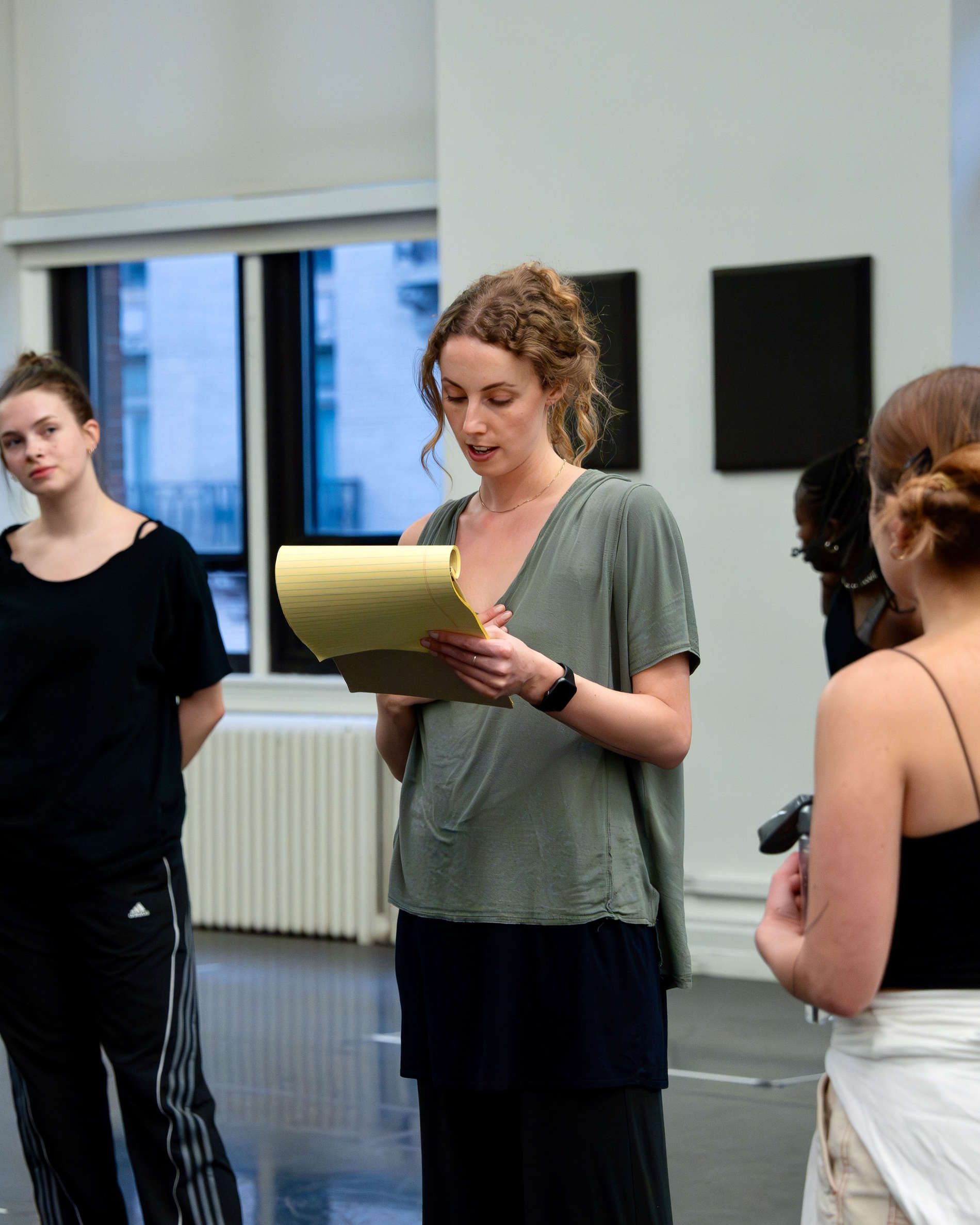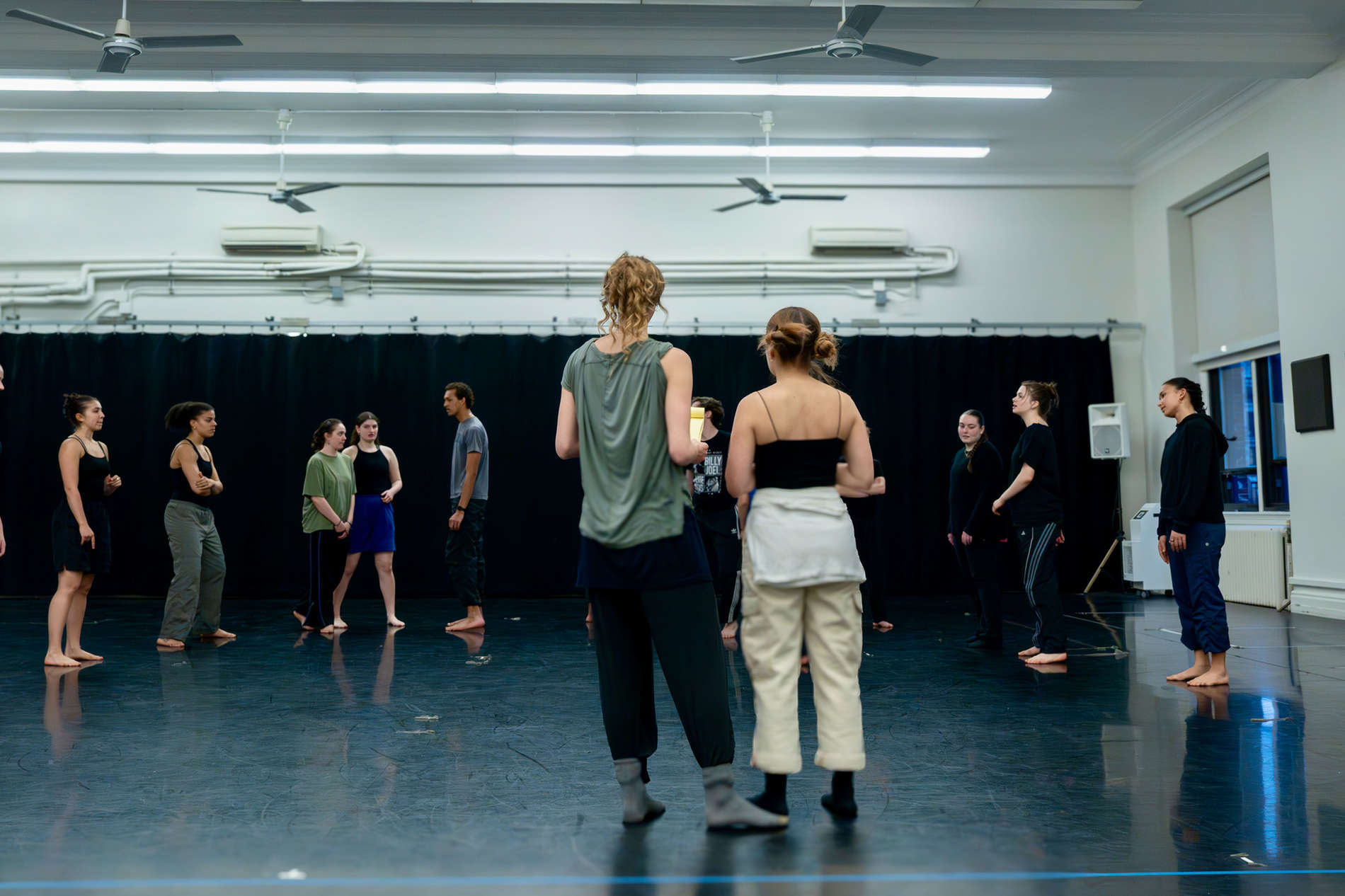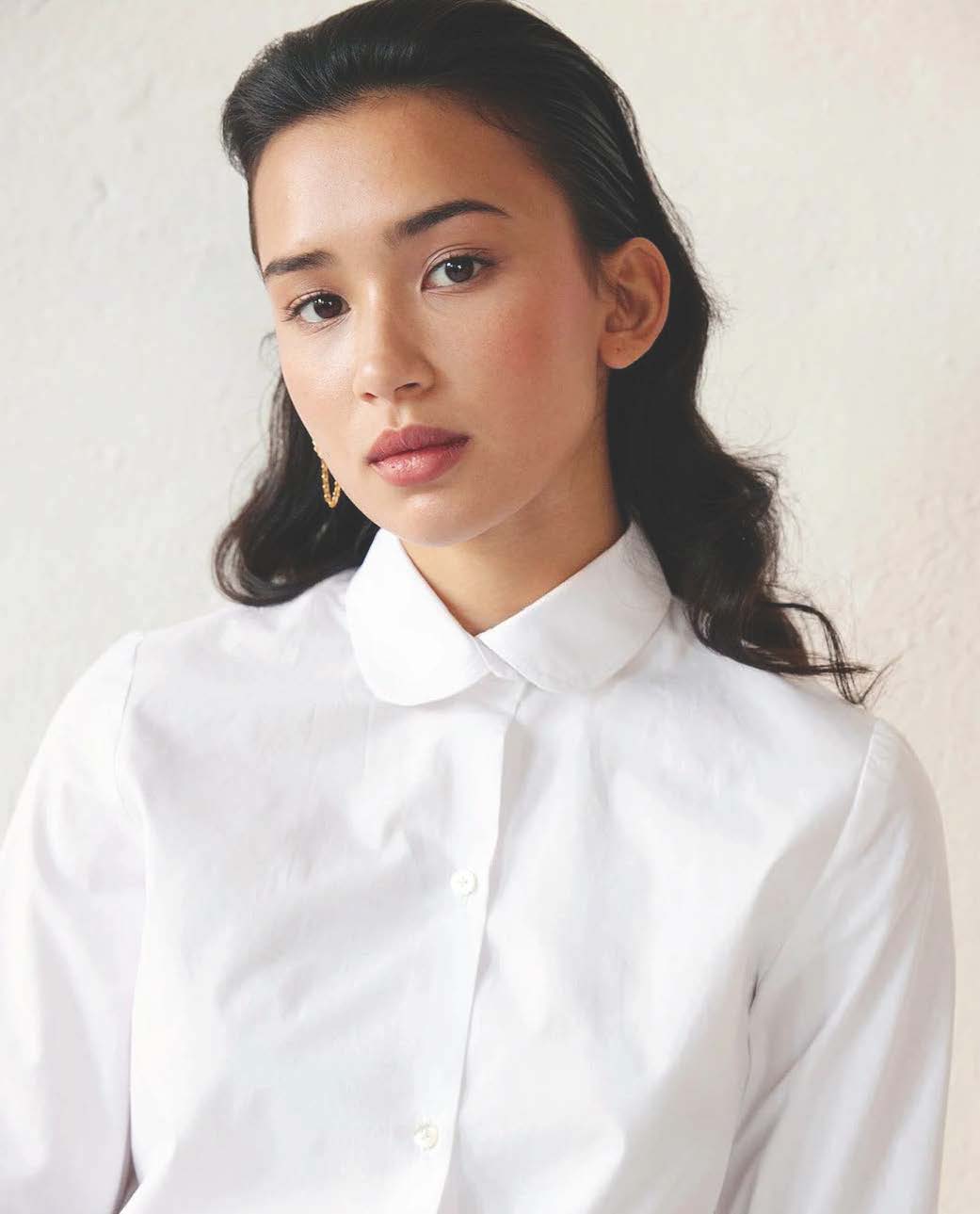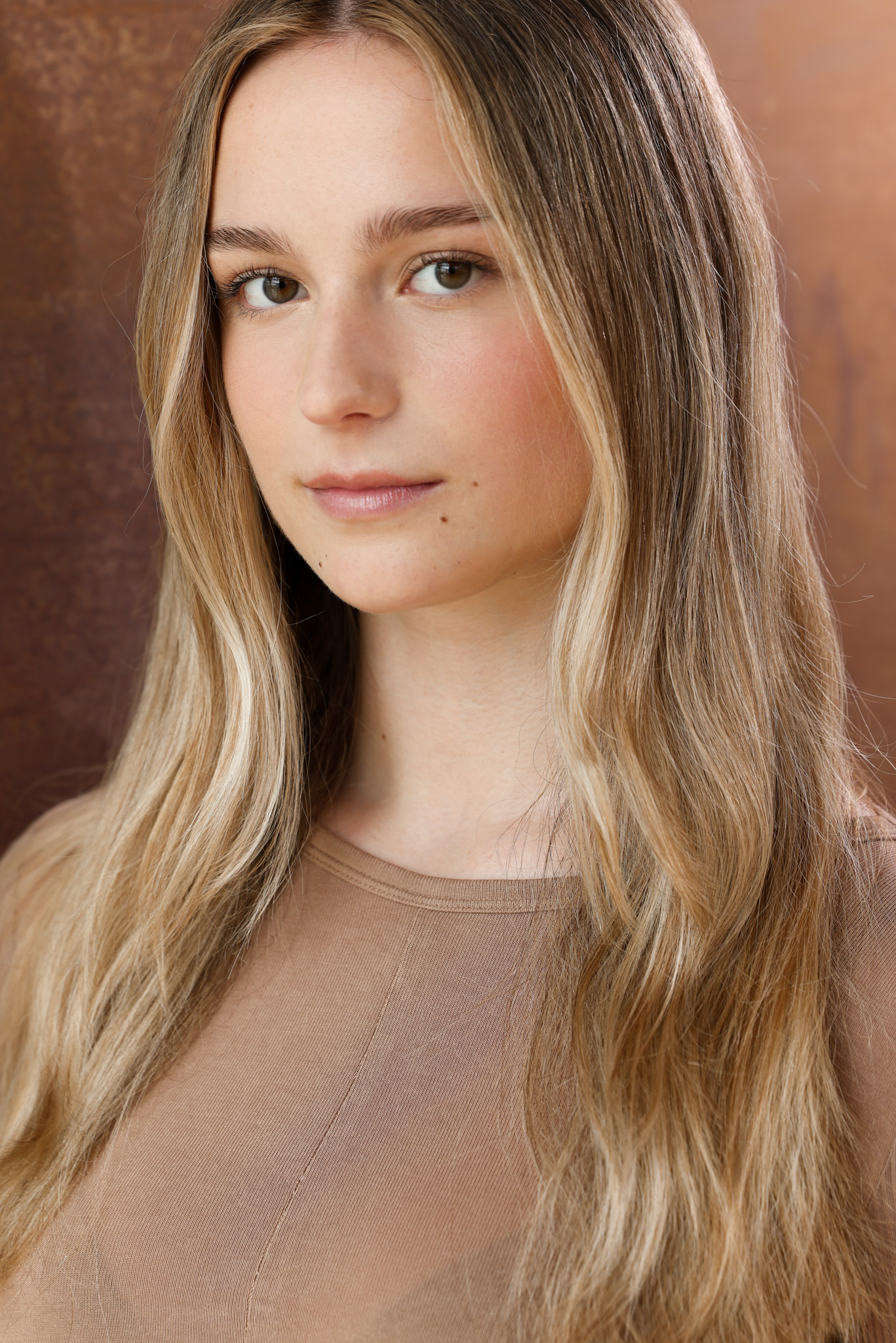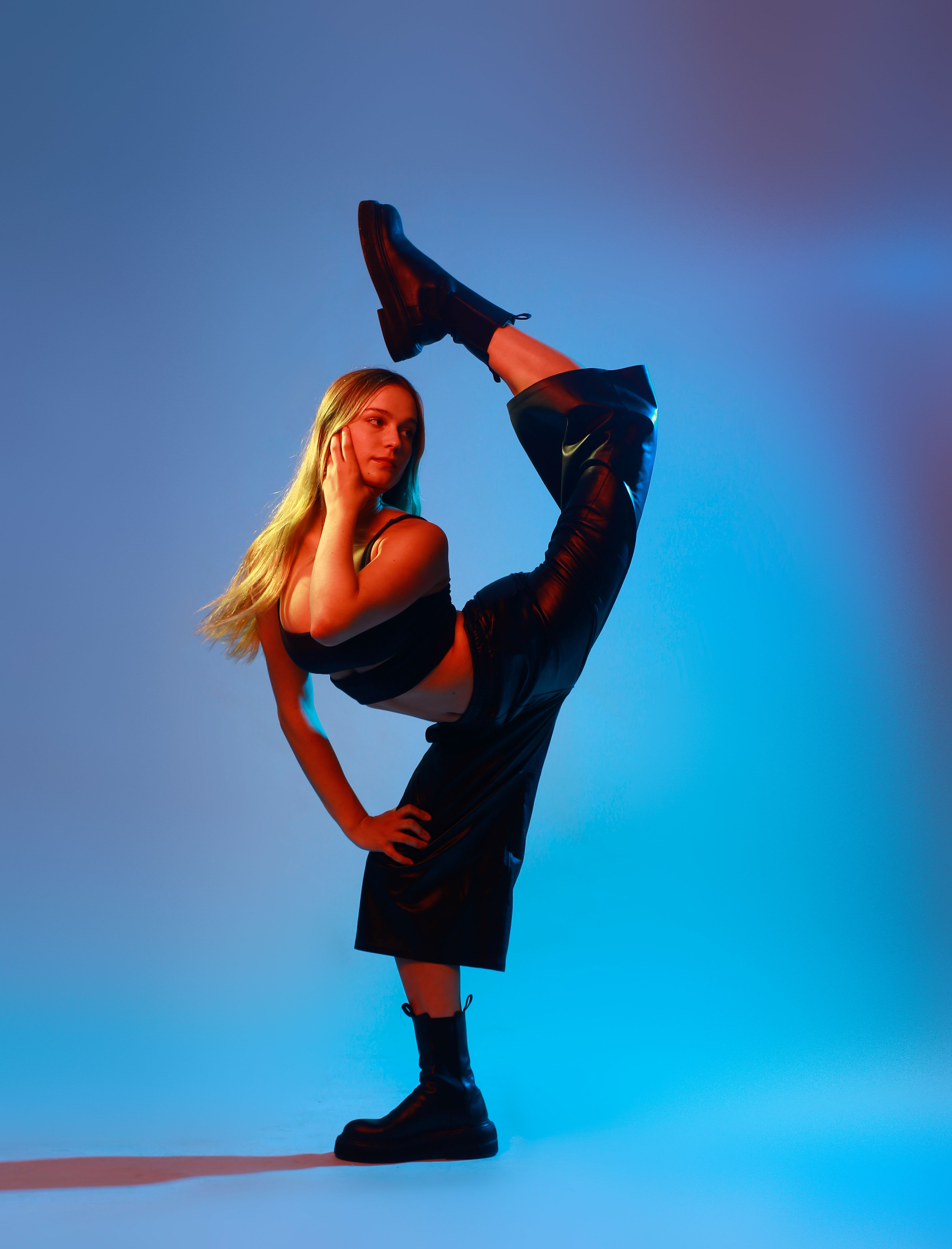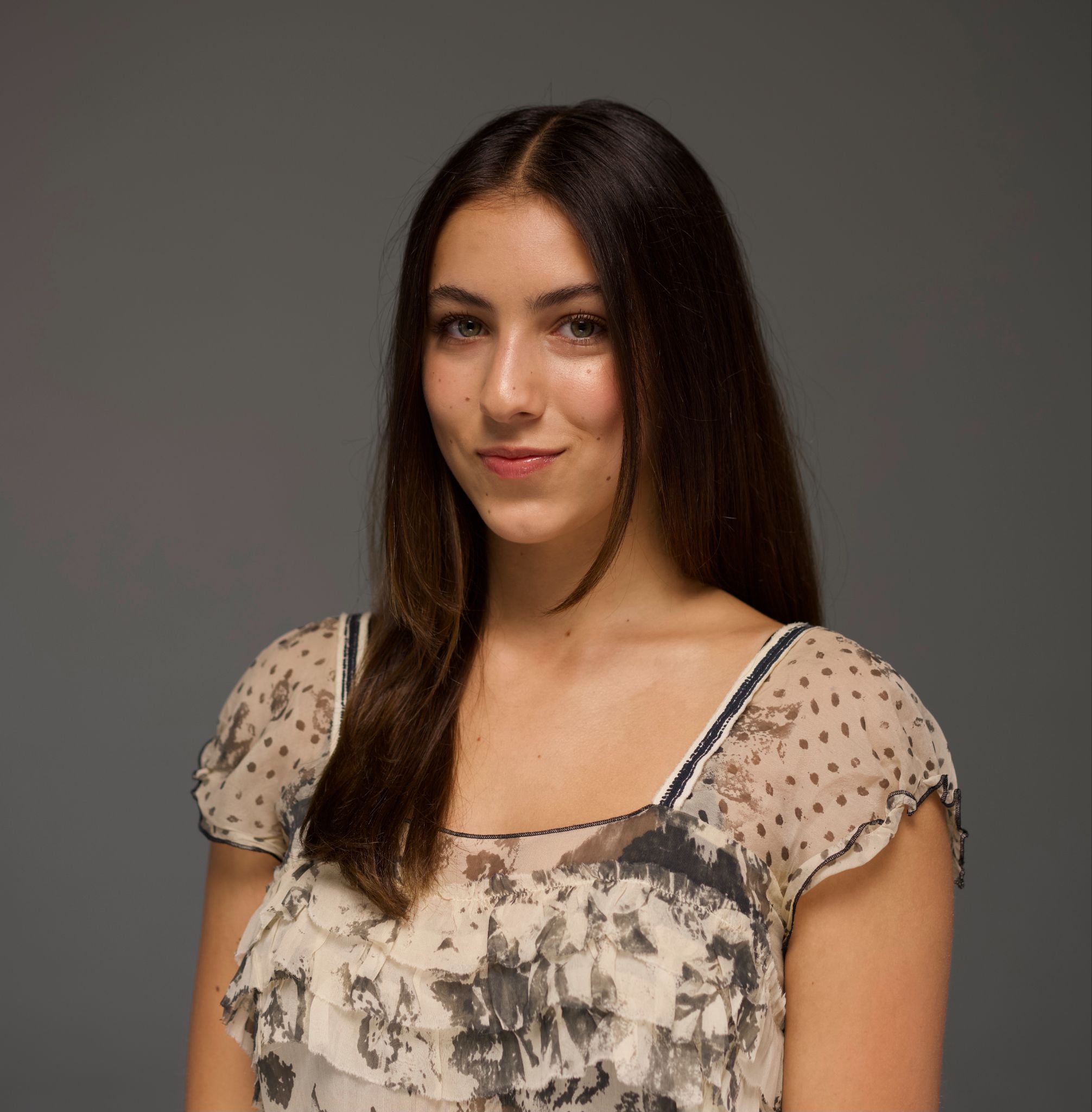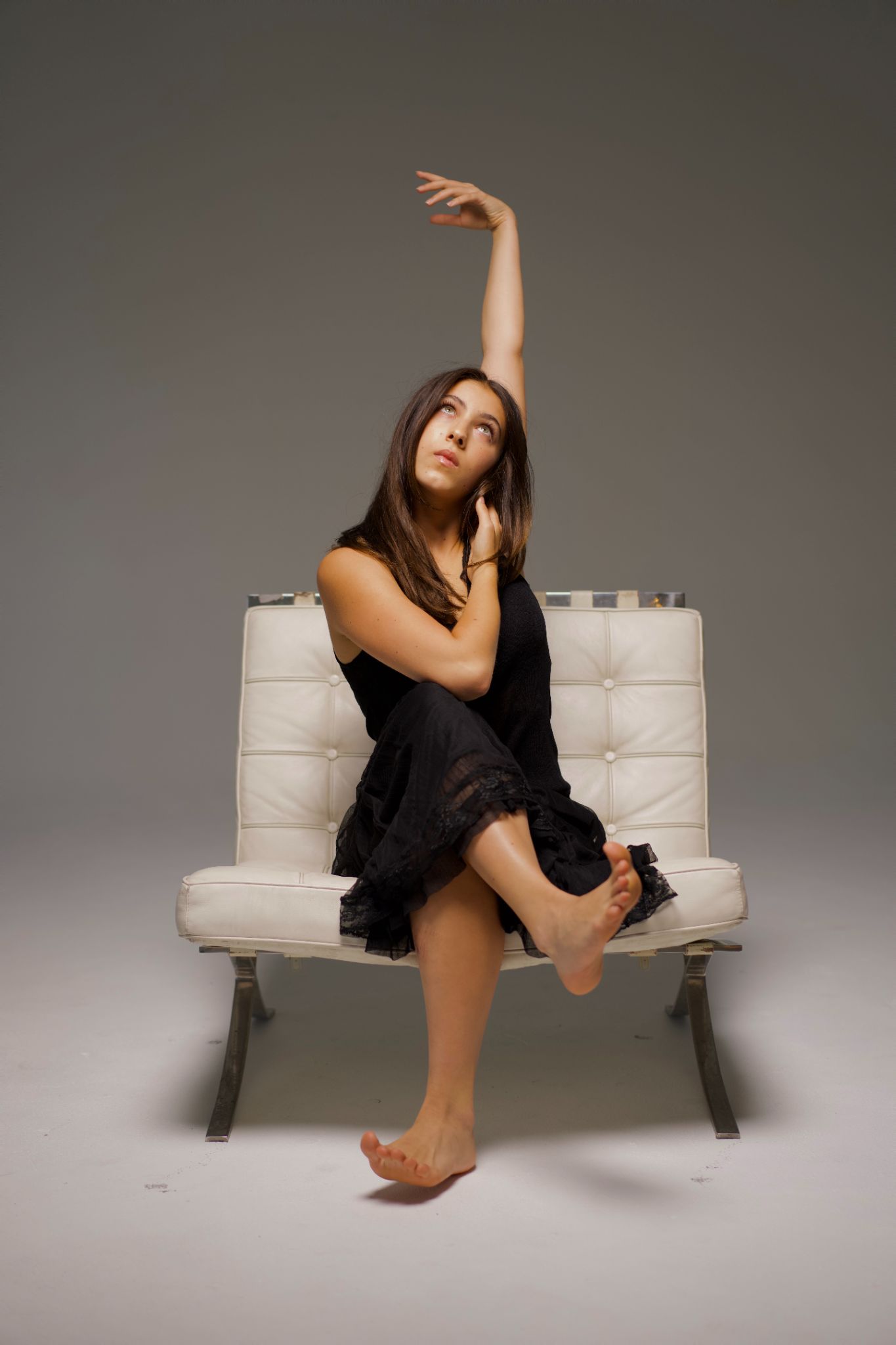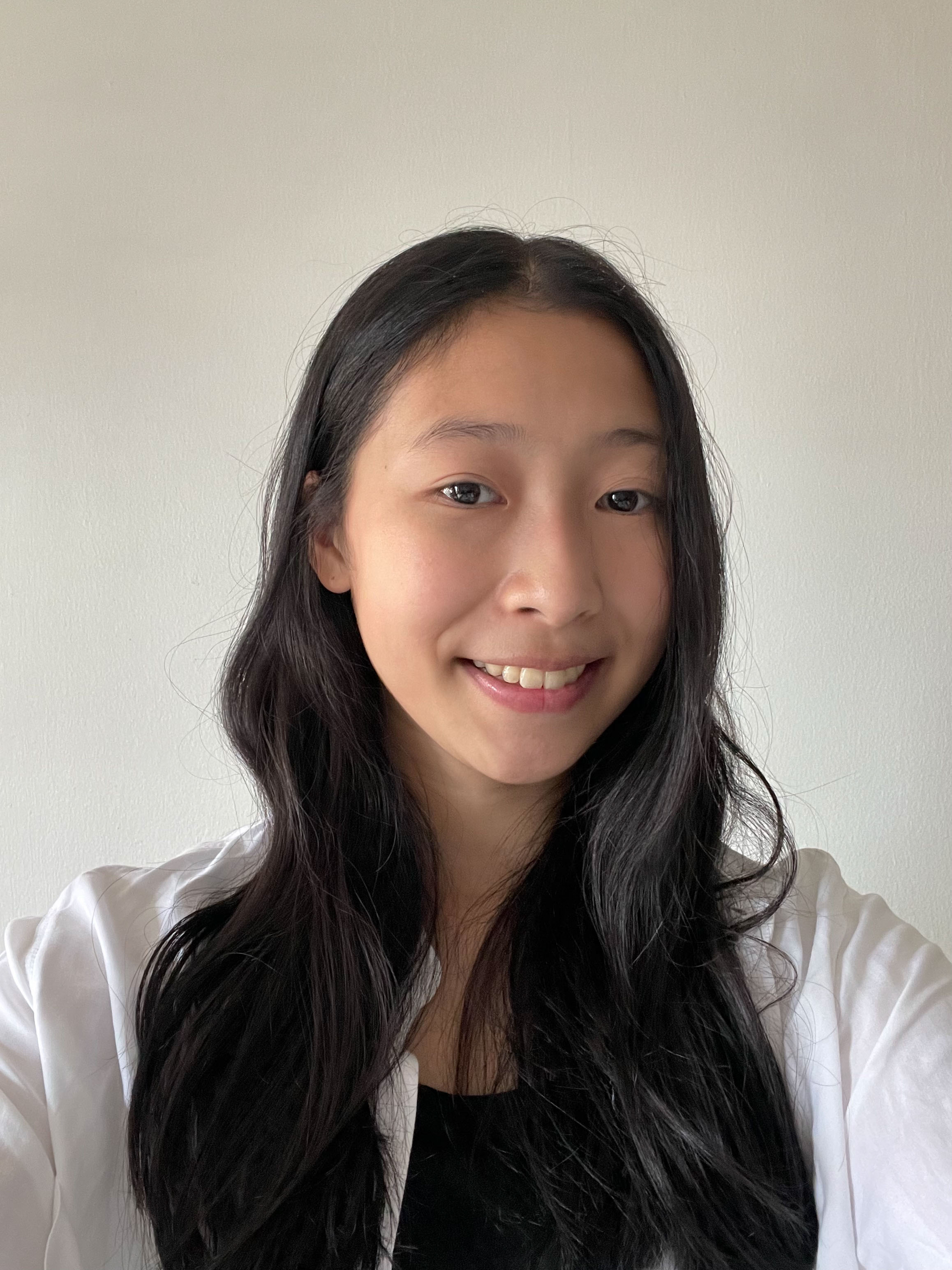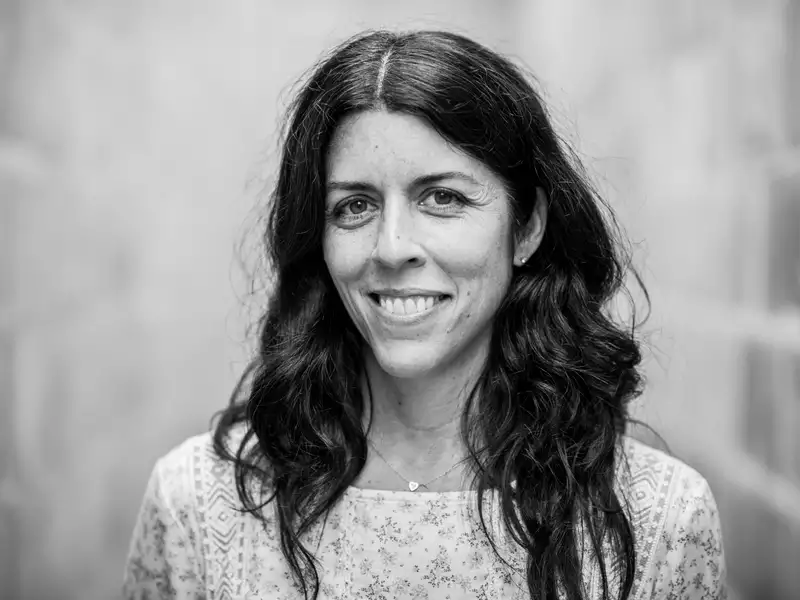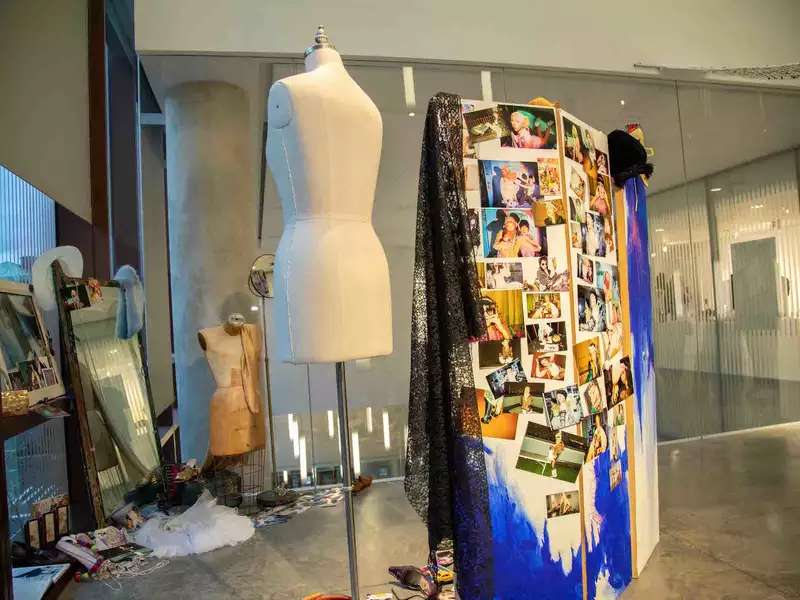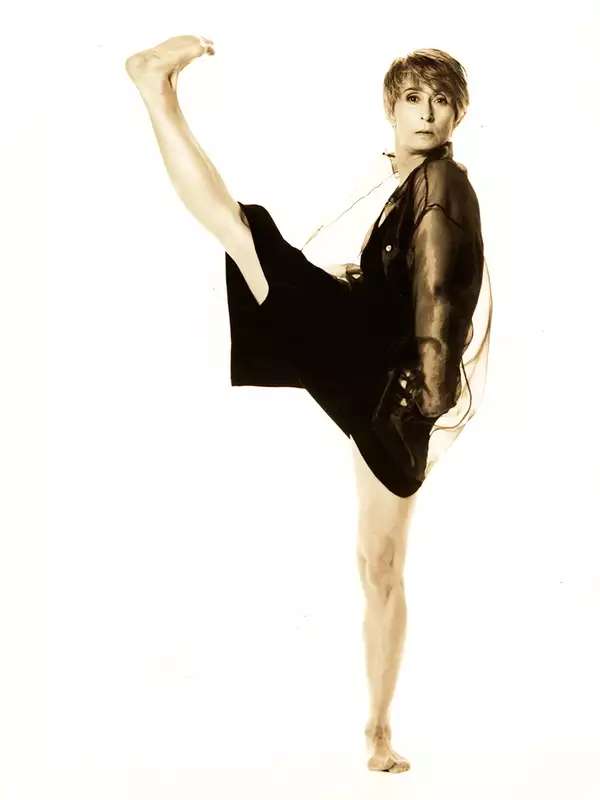Over the Spring 2024 semester, Barnard and Columbia dance students auditioned for, studied, and rehearsed a contemporary piece, The Closest We Can Get: Standing on the prow, wings spread wide. Francesca Dominguez — who teaches Countertechnique at Barnard — developed the project’s concept, music score, and choreography. She also directed the production, while students took center stage.
“It was important to me that the students experienced a truly collaborative, creative process where their ideas and movements were also incorporated into the piece,” said Dominguez.
The work was inspired by the Winged Victory of Samothrace, a sculpture of the Greek goddess Nike, which Dominguez said symbolizes “enduring strength in the face of adversity.” The 13 student-dancers channeled this resilience throughout the evolving production by pivoting as any poised dancer does, with flexibility and grace.
At the end of the semester, the decision was made to move the traditionally live concert into a new direction. Seeing an opportunity for Closest to live beyond a singular performance, Dominguez organized a plan to take her students’ work from the stage to the screen with the production of a dance film. “I quickly enlisted videographer Garrett Parker to film and edit the dance film iteration so that we could have footage of the work before everyone split off for graduation and summer break,” said Dominguez.
Georgia Bryan CC’26, one of the performers in the piece, said this dance film was a particularly unique performance experience because it was originally intended for a live audience. “Ultimately, the filmed version brought a new kind of life to the piece and highlighted subtleties that would almost certainly go unnoticed onstage,” said Bryan. “The creation process for The Closest We Can Get felt like a rare opportunity for pure, unrestrained creative exploration and expression.”
Katie Glasner, senior associate in dance, attended the dress rehearsal with a small audience. “The main difference between live performance or performing for the camera is the element of immediate feedback, with the presence of an audience. Dancing for the camera invites a closer, and perhaps more intentional, relationship among the dancers,” she said. “Creating a video recording of Closest satisfies the need for archival purposes for everyone involved — the dancers, choreographer, costume designer, and the lighting designer. To have any lasting artifact of a predominantly ephemeral form is always a good practice.”
Plus, Glasner added, “the complete physical commitment of the dancers and the lighting that creates the environment for the dancers are wonderful reflections of the amazing and ever evolving Barnard College Dance Department.”
Read some of the student dancers’ takeaways on creating The Closest We Can Get:
Thy-Lan Alcalay ’25
“It felt as if we as a group were creating a complex machine, unsure of where it was heading, until suddenly, it all came together. [Francesca] beckoned our own creative minds, pulling out our personal styles in a myriad of exercises. The movement vocabulary we developed was always filmed and neatly stored in a digital folder that we would frequently turn back to. … It seemed almost trivial that one wouldn’t know what [Closest] could look like after multiple weeks in the studio. However, I always remained excited because although I was in the dark, I had so much trust in Francesca and what she was doing that I never cared to worry about the unknown. The creation of The Closest We Can Get left me entirely creatively and physically satiated.”
Georgia Bryan CC’26
“Francesca, our incredible choreographer, encouraged the cast to surrender to the process completely. Many of the early weeks involved mostly guided improvisation exercises or sharing small phrases, which is why I was somewhat surprised when seemingly overnight we had a 20-minute-long cohesive piece. Francesca managed to execute her vision in a way that amplified the individual artistic voices of all 13 dancers. It was such a joy to participate so actively in a creative process, and it was clear how much the piece meant to the cast as a result.”
Georgia Ehrlich ’27
“It is rare that you walk into a space as a young dancer and are given full liberty and agency to be creatively and intellectually involved in the creation of a work. With Francesca and Mar [Francesca’s assistant], full investment was not only asked but required of each individual dancer. For the first month of our process, through a series of workshops and creative tasks, we solely focused on generating material. With an emphasis on play, collaboration, and risk, we each became vessels full of little phrases and motifs for Francesca to pull out at any given moment. … Francesca was always incredibly keen on us never settling into the work in a way that would inhibit us from trying both new physical and emotional pathways.”
Tobi Lee ’24
“Francesca immediately established a space of collaboration and individual exploration that made us dancers feel seen and embraced. It challenged me to approach each rehearsal as a discovery process. Because of this, the piece never felt stagnant or fixed — there was always room to play. We had also conversed several times about the running themes of the piece, [such as] humanness, living in the moment, and seeing each other. Rather than attempting to portray or ‘act out’ humanity, we just needed to be. As much as we were creating our own little world, it was less performative and more so an enhanced reality playing out in front of [our] eyes. Overall, the process was a beautiful and rare one.”

